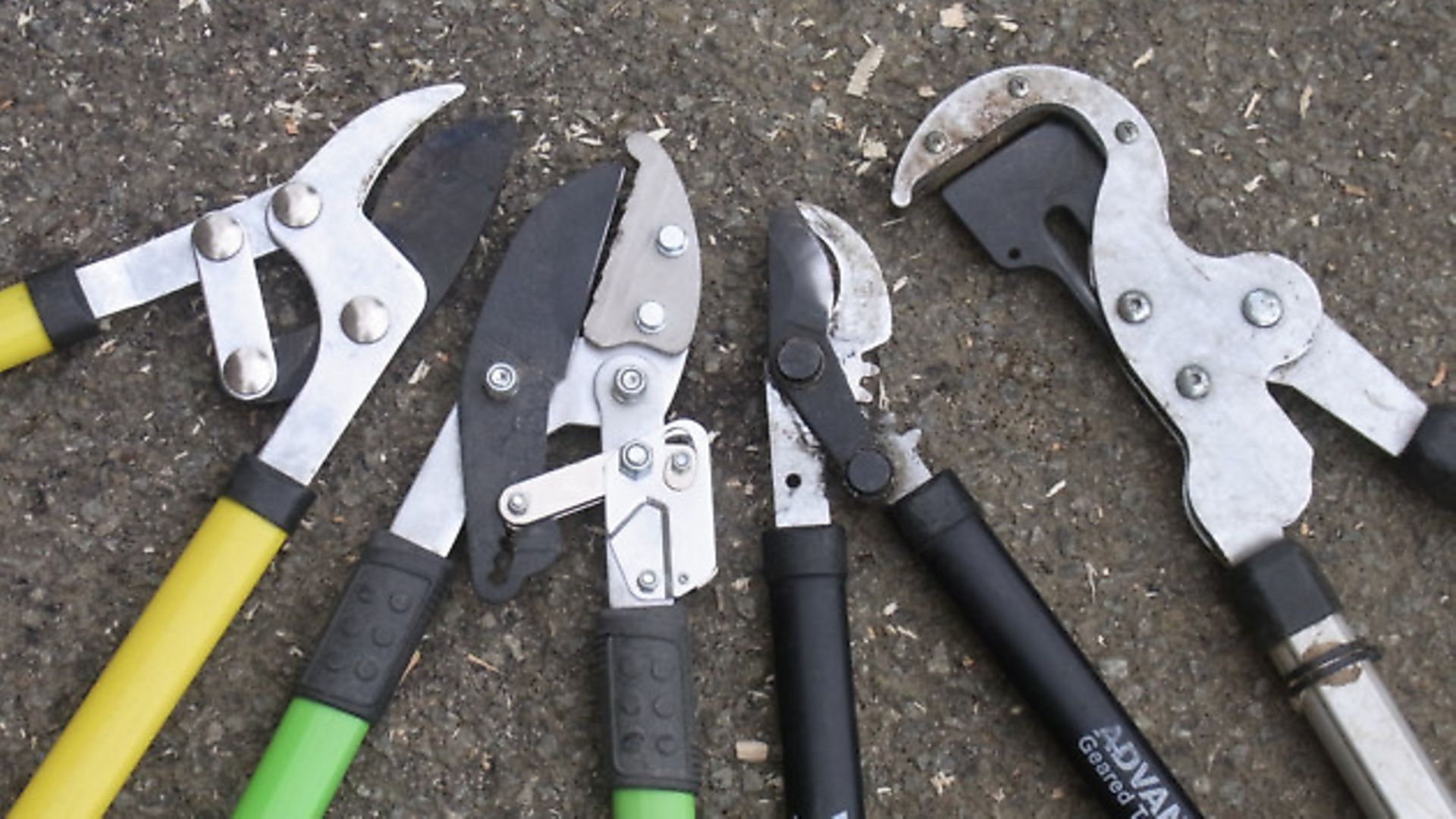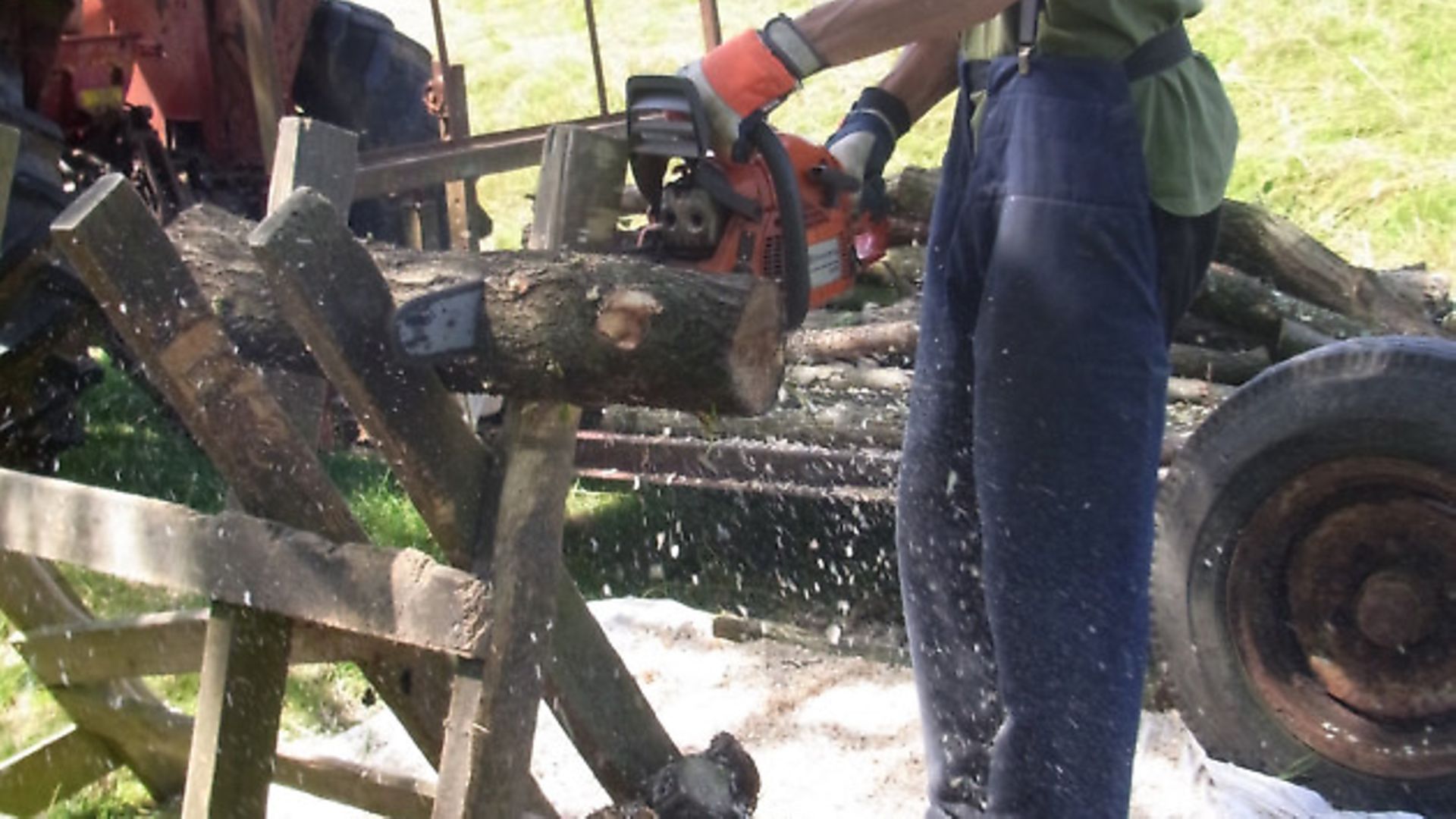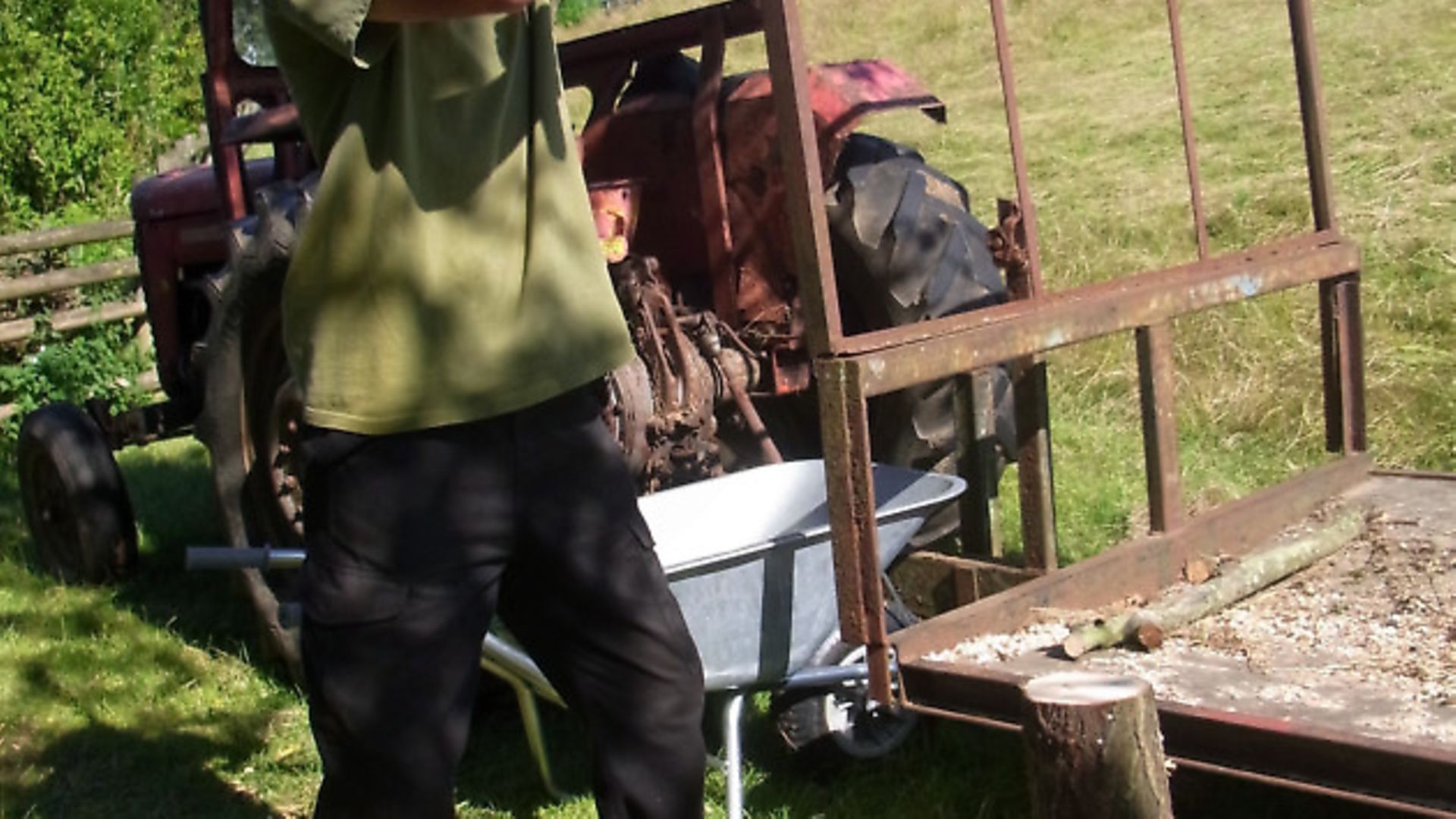You can save yourself an awful lot of work in handling and processing firewood by learning the most efficient operating systems. Alan Beat has honed them over decades…

There’s an old saying that firewood warms you twice – once when you cut it, and again on the fire. But those who harvest their own firewood know this is an understatement, for each log is handled not twice, but several times between tree and hearth. There’s a great deal of physical work involved and it certainly does keep you warm! We run two woodburning stoves to heat our farmhouse through the winter, and in recent years have fuelled a third stove in the home of our daughter Katie, so I process four or five tons of firewood every year. Here’s how I go about it.
Handling
Wood cuts and splits more easily when green than dry, so it’s best to brash (trim off twiggy side growth) straight away at harvest, cut to manageable lengths and pile in heaps ready for logging.
When handling several tons of wood between field and fire, it makes sense to minimise bending, lifting and handling. On our smallholding, I find the most efficient method is to wait until the ground dries out enough in spring to bear the weight of the tractor, whereupon I drive across with sawhorse and tools in the link box. The sawhorse is positioned so that most logs fall straight into the link box as they are cut. When the box is full, I drive back to the yard and reverse through the open front of the store shed, where logs are unloaded and stacked by hand. Bigger logs are set aside for splitting.

Where longer distances are involved, I cart much larger loads of uncut wood back to the yard on the hay trailer. This reduces to a minimum the time spent driving back and forth, but loading the trailer adds an extra handling operation.
Tools
A good saw horse is essential, and I wouldn’t contemplate processing firewood without one. For a detailed description of how to make one, see the November 2006 issue of CS. Whether bought or home made, it must stand firmly and hold wooden poles at a height to suit your stature.
The tools I use are loppers, bow saw, chainsaw and axe. Having trialled different types of lopper, I’ve come to favour those with a geared action. By providing mechanical advantage, these reduce operator effort so are less tiring to use repeatedly when processing firewood.

My bow saw carries a green wood blade with raker teeth that remove chips from the cut as work proceeds. The standard blade has peg teeth for cutting dry wood, but these don’t work efficiently on green wood as they tend to clog up.
For logging in the field I use a petrol chainsaw, or in the yard an electric model which is lighter and quieter. Personal safety equipment includes gloves, chaps, boots and helmet with visor and ear defenders.
For splitting large logs I use a seven pound felling axe. Some prefer a splitting maul, and they may be right for straight grained softwood logs that split readily. However, working with hardwood logs of twisted grain from hedgerows and small woodlands, I prefer a sharp axe that bites into the wood rather than bouncing off as the blunt maul is apt to do. Safety work boots with steel toe caps should be worn.
Processing
Small rods up to two inches diameter are cut with loppers, positioning the work so that pieces fall into the link box (in the field) or wheelbarrow (in the yard). Thicker poles up to three inches diameter are cut by bow saw, with the saw horse similarly positioned to minimise handling. I’m naturally right handed but have taught myself to saw left handed so that, by alternating between the two, the work load is spread over both sets of muscles. Alternating between lopping and sawing spreads the load further again.
Poles or logs above three inches diameter are chainsawn. Heavy logs stay firm on the saw horse by their own weight when cut individually. However, poles of three or four inches diameter are light enough to spin under the chainsaw, which is potentially dangerous. I prefer to cut these with an experienced helper feeding each one through the saw horse. Safe working is ensured by restricting each person to a clearly defined work area, separated by a buffer zone that neither chainsaw or hands enter.
If working alone, I load the saw horse with several poles at a time before passing a rope over them, tied to one side of the horse and bearing a large loop at the free end. A large wood block is positioned on the ground so as to lean heavily into the rope loop, locking the poles in place. Multiple logs are then cut with each pass of the chainsaw. This method is fast and safe provided due care is taken.
Logs that I cannot easily grasp and lift with one hand are set aside for splitting. The top face of the log should stand at waist height on a stout chopping block. Facing the block with feet at shoulder width apart, I raise the axe directly above my head before swinging down, aiming at the central core. Let the weight of the axe do the work, and bending at the knees as the axe falls ensures that, in the worst case scenario, it will strike the ground harmlessly and not your foot or leg.
Although it seems counter-intuitive, an independent study has demonstrated that even a novice axe user, shown good technique, outperforms all other splitting methods including powerful hydraulic machines.
Storage
Logs dry best with protection from rain and good air circulation on all sides; so the ideal log store has a roof, an open front and three sides loose boarded. Building the stack on wooden pallets provides air circulation at the base.
You need to store enough firewood for at least two winters on a rolling programme. There should be two separate stacks: one for the winter ahead, and one for the winter following. As the first stack is burned, more wood is harvested to replace it; and so on. I build our stacks with an outer wall of large logs, filling the space behind with smaller logs, sticks and kindling. Keep the outer wall, and any corners, leaning inwards a little from the vertical for stability.
Free standing stacks can be built wherever there is space. Building against a wall improves stability of the stack. Take care over corners as these are the weakest point, and a collapsed stack means more work. I often use oddly shaped branched logs for the corners, ensuring that each successive layer seats down firmly. Another method is to build the corners with alternate criss-cross layers of similar sized split logs.
Slope the top of the stack before covering with roofing sheets to ensure rainwater runoff, firmly tied or weighted down so that they stay put during storms.
———————————
This article is from the November 2014 issue of Country Smallholding
Image(s) provided by:
Archant







